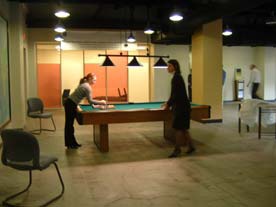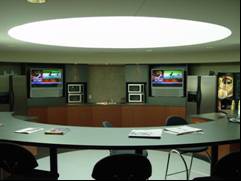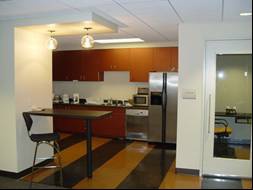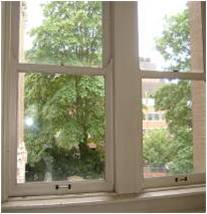The Workplace Environment as a Catalyst for Social Change
We know workplace design can influence functional behaviors, but can it be a catalyst for social change? Can organizations use the environment to improve the sense of community, increase morale, reduce stress, and develop cross group relationships?
This seems like a pretty stiff challenge. But a small leadership group at the U.S. General Service Administration's Regional Office in Denver made it happen. They began with an environmental upgrade, and ended with a new office environment that dramatically changed not only the appearance of the space, but also the attitudes and behaviors in the workforce.
The project, lead by the Public Buildings Service team, was responding initially to GSA's World-class Workplace program to provide a better work environment for associates and to attract and retain new workers. However, as their commitment to the project developed, so did their desire to understand how their own organization worked, and especially how to improve internal working relationships in order to serve their clients better. They wanted to use the office as a showcase that would reflect the values and innovations that GSA wanted to offer its customers.
Project Goals
Through numerous internal workshops and site visits to other organizations, the PBS team developed the following goals for the workplace renovation.
- Improve internal working relationships, especially cross group communication and collaboration.
- Reduce workplace stress and increase the overall quality of life for GSA associates.
- Use the workplace as a way to show that PBS is a thought leader in workplace design.
Workplace Solutions
- Open spaces at central nodes for spontaneous meeting
- More meeting spaces of a greater variety
- A centrally located cafe
- A new daylight entry space
- A "de-stress" space with pool table, ping pong, exercise room and lounge furnishings
Gallery



Related Topics
Daylighting
Daylighting uses natural daylight as a substitute for electrical lighting. While it will likely be counterproductive to eliminate electrical lighting completely, the best proven strategy is to employ layers of light - using daylight for basic ambient light levels while providing occupants with additional lighting options to meet their needs.
An effective daylighting strategy appropriately illuminates the building space without subjecting occupants to glare or major variations in light levels, which can impact comfort and productivity.
In order to provide equitable access to daylight ensure the space is optimized to disperse daylight well. Locate private offices toward the core of the space and specify low workstation panels. Use glass walls and light-colored surfaces on walls and desks to disperse daylight throughout the space. In all daylighting strategies, it is important to consider glare and to take steps to minimize it. Find more strategies below:
GSA | Saving Energy through Lighting and Daylighting Strategies![]()
DOE LBL | Tips for Daylighting with Windows![]()
Institutional Change
Institutional change refers to the process of designing and implementing new ways of doing things that can persist over time. In the realm of sustainability, institutional change means finding new ways of work that are less resource intensive, while continuing enable agencies to meet their mission goals. Institutional change integrates behavior with technologies and policies, recognizing that all three need to align to make a significant and lasting difference. More information on key principles and strategies to promote institutional change can be found on the DOE-Federal Energy Management Program Institutional Change website: http://energy.gov/eere/femp/institutional-change-sustainability![]()
Occupant Satisfaction
A primary goal of sustainable design is to maximize occupant comforst and satisfaction, while minimizing environmental impact and costs. Comforst and satisfaction are important for many reasons, not least of which is that they correlate positively with personal and team performance. The greater the satisfaction, the higher the productivity and creativity of an organization. It has also been demonstrated that occupant satisfaction impacts staff rentention.
Space Reconfiguration and Renovation
As needs change over time, tenants often need to convert space or phase the conversion of individual space or rooms to meet these changing needs.

